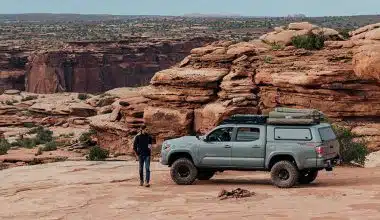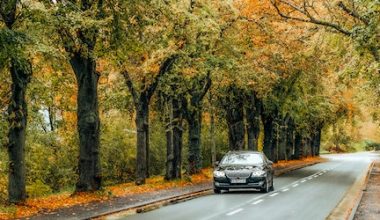A cross-country road trip is an American classic. It’s the perfect way to see the country, experience different cultures, and create memories that will last a lifetime. But before you hit the open road, there’s a little bit of planning to do.
In this blog post, we’ll walk you through everything you need to know to plan and enjoy the perfect cross-country road trip. From choosing the right route and packing the essentials to finding the best places to stay and eat, we’ve got you covered.
Cross Country Road Trip
A cross-country road trip is an exciting adventure that involves driving across the country, mostly from one coast to another, and exploring various destinations along the way. Cross-country road trips are a great way to explore the United States, offering the opportunity to visit popular cities, national parks, and roadside attractions in one vacation. There are many routes to take, each with its own unique highlights and landscapes.
Benefits of Cross-Country Road Trip
A cross-country road trip offers numerous benefits and unique experiences.
#1. Freedom and Flexibility
One of the biggest advantages of a cross-country road trip is the freedom and flexibility it provides. You have the freedom to choose your route, make spontaneous detours, and explore off-the-beaten-path destinations.
#2. Exploration and Adventure
A cross-country road trip allows you to explore different states, regions, and landscapes. You can visit national parks, scenic drives, historical sites, and iconic landmarks along the way. It’s an opportunity to immerse yourself in the natural beauty and cultural diversity of the country.
#3. Connection with Nature
Driving through vast landscapes and scenic routes can provide a deep connection with nature. You can witness breathtaking sunsets, stunning mountain ranges, serene lakes, and picturesque coastlines.
#4. Cultural Immersion
A cross-country road trip exposes you to various cultures, traditions, and local communities. You can interact with people from different backgrounds, try regional cuisines, and learn about the history and heritage of different regions. It’s an opportunity to broaden your horizons and gain a deeper understanding of the country’s diverse cultural fabric.
#5. Self-Discovery and Personal Growth
Traveling long distances on your own or with friends or family can be a transformative experience. It allows for self-reflection, personal growth, and the opportunity to step out of your comfort zone. You can learn new skills, overcome challenges, and gain a sense of independence and self-confidence.
#6. Bonding and Quality Time
A cross-country road trip can be a great bonding experience with friends or family. Spending extended periods together in a confined space fosters deeper connections, shared memories, and quality time. It’s an opportunity to strengthen relationships and create lifelong memories.
#7. Cost-Effective Travel
Road trips can often be more cost-effective compared to other forms of travel. You have more control over your expenses, such as accommodation and meals. Camping or staying in budget-friendly accommodations can help save money.
#8. Flexibility in Accommodation
With a road trip, you have the flexibility to choose your accommodation options. You can camp in national parks, stay in motels, book Airbnb rentals, or even sleep in your vehicle if you have a camper or RV. This flexibility allows you to tailor your accommodations to your budget, preferences, and desired level of comfort.
#9. Roadside Attractions and Quirky Stops
One of the joys of a road trip is discovering unique roadside attractions and quirky stops along the way. From giant statues and unusual museums to charming small towns, these unexpected gems add excitement and fun to your journey.
A cross-country road trip often takes you off the beaten path and allows you to discover hidden gems that aren’t typically found in travel guides. These hidden gems could be charming towns, local restaurants, scenic viewpoints, or secret trails that offer a unique and authentic experience.
Best Cross Country Road Trip
When it comes to the best cross-country road trips, several popular routes and itineraries offer unique experiences and stunning landscapes. Here are a few examples:
#1. Great River Road
Following the course of the Mississippi River, the Great River Road is a scenic route that spans ten states, from Minnesota to Louisiana. This road trip showcases the natural beauty of the river, charming river towns, historic sites, and cultural attractions along the way.
#2. Trans-Canada Highway
For those looking to explore Canada, the Trans-Canada Highway offers an incredible cross-country road trip experience. Stretching nearly 8,000 kilometers from Victoria, British Columbia, to St. John’s, Newfoundland, this route takes you through diverse landscapes, including mountains, forests, prairies, and coastal regions.
#3. Highway 83 Road Trip
This route runs from north to south, exploring several of the “flyover states” of the Midwest. At less than 2,000 miles from border to border, it is one of the shorter cross-country US road trips, but the unique stops along the way make it one of the best cross-country road trip routes in the United States
#4. Southern Cross Country
If you prefer a southern route, you can embark on a road trip from Charleston, South Carolina, to San Diego, California. This journey takes you through the southern states, allowing you to experience southern hospitality, delicious cuisine, historic landmarks, and beautiful landscapes.
#5. Northern Route
This route stays on a path across northern states like Minnesota, Montana, or Idaho. Highlights along this route include Tumwater Canyon (WA), Glacier National Park (MT), Lake Michigan (MI), and Acadia National Park (ME).
#6. Route 66
This iconic route runs from Chicago, Illinois, to Santa Monica, California, covering 2,448 miles. Highlights along this route include the Grand Canyon, Petrified Forest National Park, and Cadillac Ranch.
#7. Pacific Coast Highway
Driving along the Pacific Coast Highway (Highway 1) allows you to experience the breathtaking beauty of the California coastline. Starting from San Francisco and ending in San Diego, this road trip offers stunning ocean views, rugged cliffs, picturesque beaches, and opportunities to explore vibrant cities like Los Angeles.
#8. Washington to Florida Route
This route offers a little bit of everything that roadtrippers could want, from the mountains of the Pacific Northwest to the beaches of Florida. Highlights along this route include Yellowstone National Park, the Grand Canyon, and New Orleans.
#9. The New England Coastal Tour
Embark on a journey along the picturesque coastline of New England, from Boston, Massachusetts, to Bar Harbor, Maine. This road trip allows you to experience charming coastal towns, historic lighthouses, fresh seafood, and beautiful beaches.
#10. The Appalachian Trail
This road trip follows the Appalachian Mountains, stretching from Georgia to Maine. Along the way, you’ll encounter stunning mountain vistas, charming small towns, and opportunities for outdoor activities like hiking, camping, and wildlife spotting.
How To Plan Cross-Country Road Trip
A cross-country road trip can be an exciting adventure, allowing you to explore different states, landscapes, and attractions. Here are some tips and considerations for planning your cross-country road trip:
#1. Determine the Route
There are several popular routes for cross-country road trips in the United States. Some well-known routes include Route 66, The Loneliest Road, and the Oregon Trail. Consider the attractions and destinations you want to visit along the way and choose a route that suits your preferences.
#2. Decide on the Duration
Cross-country road trips can vary in duration depending on the distance you plan to cover and the number of stops you want to make. Some road trips can be completed in a week, while others may take several weeks or even months. Determine how much time you have available and plan your itinerary accordingly.
#3. Plan Your Stops
Identify the attractions, landmarks, and cities you want to visit along your route. Consider including national parks, scenic drives, historical sites, and popular tourist destinations. Make a list of these stops and plan your daily itinerary accordingly.
#4. Consider Accommodations
Decide whether you want to camp, stay in hotels, or use a combination of both for your accommodations. If you plan to camp, make sure to check the availability of campsites and make reservations in advance. If you prefer hotels, consider booking them ahead of time to secure the best rates and availability.
#5. Prepare Your Vehicle
Before embarking on a cross-country road trip, ensure that your vehicle is in good condition. Check the tires, brakes, fluids, and other essential components. It’s also a good idea to have a roadside emergency kit and a spare tire in case of any unexpected issues during your trip.
#6. Pack Essentials
Pack essential items such as clothing, toiletries, snacks, water, a first aid kit, and any other items you may need during the trip. It’s also a good idea to bring a map or a GPS device to navigate your way.
#7. Budget and Expenses
Determine your budget for the road trip, including fuel costs, accommodations, meals, and activities. Consider using travel apps or websites to find deals on accommodations and attractions. Plan your meals and consider packing some snacks and drinks to save money on the road.
#8. Stay Safe
Follow all traffic laws and practice safe driving habits during your road trip. Take breaks regularly to rest and stretch your legs. Avoid driving while fatigued and make sure to get enough sleep before hitting the road.
#9. Flexibility
While it’s essential to have a plan, be open to spontaneity and unexpected discoveries along the way. Leave room for detours or changes in your itinerary to make the most of your journey.
#10. Stay Connected and Informed
Make sure you have reliable navigation tools, whether it’s a GPS device, smartphone app, or physical maps. Stay updated on weather conditions, road closures, and traffic updates to avoid any unexpected delays or detours. Stay connected with friends and family, and let them know your itinerary for safety purposes.
Cross-Country Road Trip Essentials
Packing essentials for a comfortable and enjoyable cross-country road trip includes essential items such as
Carry reliable navigation tools such as a GPS device, a smartphone with a navigation app, or physical maps to help you navigate unfamiliar routes and find your way.
#2. Roadside Emergency Kit
Prepare an emergency kit that includes items like jumper cables, a tire pressure gauge, a spare tire, a jack, a flashlight, and basic tools. These will come in handy in the event of unexpected breakdowns or emergencies on the road.
#3. Vehicle Maintenance Supplies
Bring essential vehicle maintenance supplies such as motor oil, coolant, windshield washer fluid, and a tire inflator. Regularly check your vehicle’s fluid levels and tire pressure throughout the trip.
#4. Comfortable Clothing and Footwear
Pack comfortable clothing suitable for various weather conditions. Include layers for temperature changes and versatile footwear for walking and exploring different locations.
#5. Travel Documents
Carry important travel documents such as your driver’s license, vehicle registration, proof of insurance, and any necessary identification for passports if crossing borders.
#6. Snacks and Water
Stock up on non-perishable snacks and plenty of water to stay hydrated and energized during long stretches of driving. This will help you avoid unnecessary stops and save time.
#7. First Aid Kit
Pack a basic first aid kit with essentials like bandages, antiseptic ointment, pain relievers, and any necessary prescription medications. It’s always better to be prepared for minor injuries or illnesses.
#8. Personal Hygiene Items
Don’t forget to bring toiletries, hand sanitizer, wet wipes, and tissues for personal hygiene needs. These items will help you stay fresh and clean during your journey.
#9. Entertainment and Electronics
Consider bringing entertainment options such as books, magazines, music playlists, podcasts, or audiobooks to keep you entertained during long drives. Don’t forget to bring chargers for your electronic devices.
#10. Comfort Items
Pack pillows, blankets, and travel cushions to make your journey more comfortable, especially during overnight stays or rest breaks.
What Is Cross-Country Travel?
Cross-country travel is a journey that spans a significant distance across a country, typically involving traveling from one coast to another or covering a substantial portion of the country’s territory. It often involves road trips, where individuals or groups travel by car or RV, exploring various destinations and attractions along the way.
What Do You Need For a Cross-Country Trip?
When preparing for a cross-country trip, pack the following essentials: clothing suitable for different weather conditions, toiletries and personal care items, an ample supply of prescription medications and a basic first aid kit, navigation tools such as a GPS device or smartphone with a navigation app, entertainment options like books and music, snacks and water for sustenance, important travel documents and emergency contact information, comfort items like pillows and blankets, emergency supplies including a flashlight and roadside emergency kit, and sufficient cash and cards for emergencies and convenience. Remember to pack according to your specific needs and check the weather forecast for your route.
What Is The Best Month For a Cross-Country Road Trip?
The best months for a cross-country road trip are summer months, particularly June, July, and August. They are often considered the best time for a cross-country road trip due to favorable weather conditions and longer daylight hours.
What Is The Best Cross-Country Driving Route?
Determining the best cross-country driving route depends on personal preferences and desired destinations. Popular options include the northern route, central route, southern route, Route 66, the Loneliest Road, and the Oregon Trail. Consider factors such as weather conditions, attractions along the way, and specific landmarks or cities you wish to visit when planning your route.
What Is Cross-Country Called?
Cross-country can be called “off-road” or “outdoor.” It can also be referred to as “cross-country running” or “Nordic skiing” in specific contexts.
What Do You Do For Cross-Country?
For cross-country, it is important to plan your route, study driving laws, decide on the duration of stops, make accommodation arrangements, pack essentials, budget and track expenses, prioritize safety and vehicle maintenance, and enjoy the journey while being flexible.
Conclusion
Cross-country road trips offer unique experiences and stunning landscapes. These routes showcase natural beauty, historic sites, and cultural attractions in diverse landscapes. Cross-country road trips offer exciting adventures to explore different states and landscapes. To plan, determine the route, decide on the duration, plan stops, consider accommodations, and ensure your vehicle is in good condition. Keep these items ready for unexpected breakdowns, emergencies, and long drives. Flexibility and staying connected are essential for a successful journey, allowing for unexpected discoveries and detours.
- HOW TO PLAN A ROAD TRIP: The Ultimate Guide
- The Ultimate Guide: How to Plan the Best Scenic Road Trip
- ROAD TRIP ESSENTIALS: Everything You Need to Pack for the Ultimate Adventure
- BEST TRAVEL FIRST AID KIT OF 2023
- BEST THRILLING ROAD TRIP IDEAS IN 2023






